In 2011, I went to the opening of an unknown photographer at the Chicago Cultural Center, along with local TV crews, curators, and probably every photographer in the city. Rarely have I been to an opening with so many. The curious, the jealous, the wannabe collectors – and so it began, the odyssey and celebrity of an unknown photographer and nanny named Vivian Maier. What would she, a recluse, think of all the fame to come?
That was her first U.S. show and only the tip of the iceberg of what was to come for the artist, the deceased nanny. The woman with a talent for photography that most photographers can only dream of and wish they had.
She was born in New York City in 1926; her parents split shortly after, leaving her mother to raise her alone. Her mother headed back to her home country of France, leading Vivian to be raised in both countries. Vivian’s younger years are a bit of mystery, like so much else about her, but it is believed those years were far from easy.
It is said that Vivian learned photography while in France, and took that knowledge and a camera with her when she returned to NYC in 1951. She worked there as a nanny, and brought those skills and her camera to Chicago’s affluent North Shore suburbs, where she lived and worked for most of her days. Yet something else and more important was going on when she was working as a nanny: her image-making. Years and years of it, most of her time spent with her camera on the streets of Chicago, quietly making images that spoke volumes. And volumes and volumes of photos there were.
Stored away in a storage unit, and finally unearthed by John Maloof in 2007. He had purchased the contents of an auctioned-off storage locker for $260 for non-payment of bills. The bills of Vivian Maeir, who was unable to pay.
These volumes were not printed photographs in photo albums or folders but in rolls and rolls of unprocessed film. Thankfully, Maloof saw the value of not only processing her film but preserving it. The value is now insurmountable not only historically and aesthetically but I am sure financially as well.
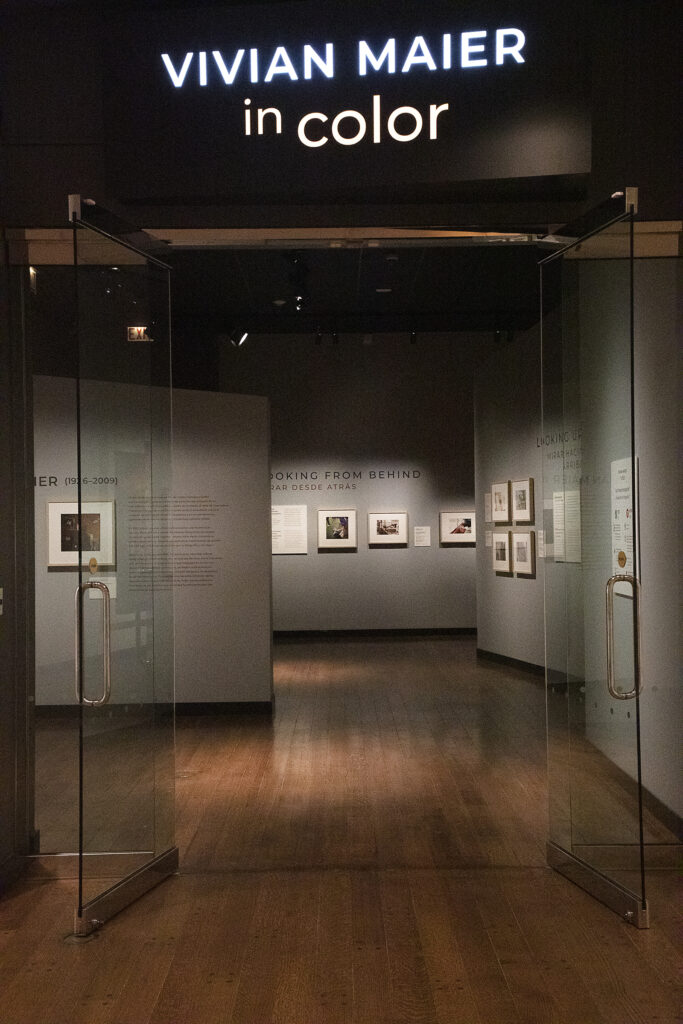
The Chicago History Museum has a new exhibition, Vivian Maier: In Color, of the color work not shown as often as her now-famous black and white photographs.
I love this museum; I listen to visitors speaking French and a bit of German, on this weekend day when most of the viewers were adults. They might not understand why there are simple and elementary statements accompanying this work, “View from above”, “View from below”. One might not know or realize how much this museum is geared to young school-age children who are often part of school field trips here. The first room is filled with some of these statements and, for lack of a better term, some of her simpler images. As well as a portion of her now-famous backstory.
Does Maier’s work need color? While some photographers use it for aesthetics, others might simply rely on it. Vivian doesn’t need it to create a great photograph. She already had the eye to do that. Her color work almost feels like an afterthought, more like something she felt she needed to try when color film first came out or to experiment and play with it.
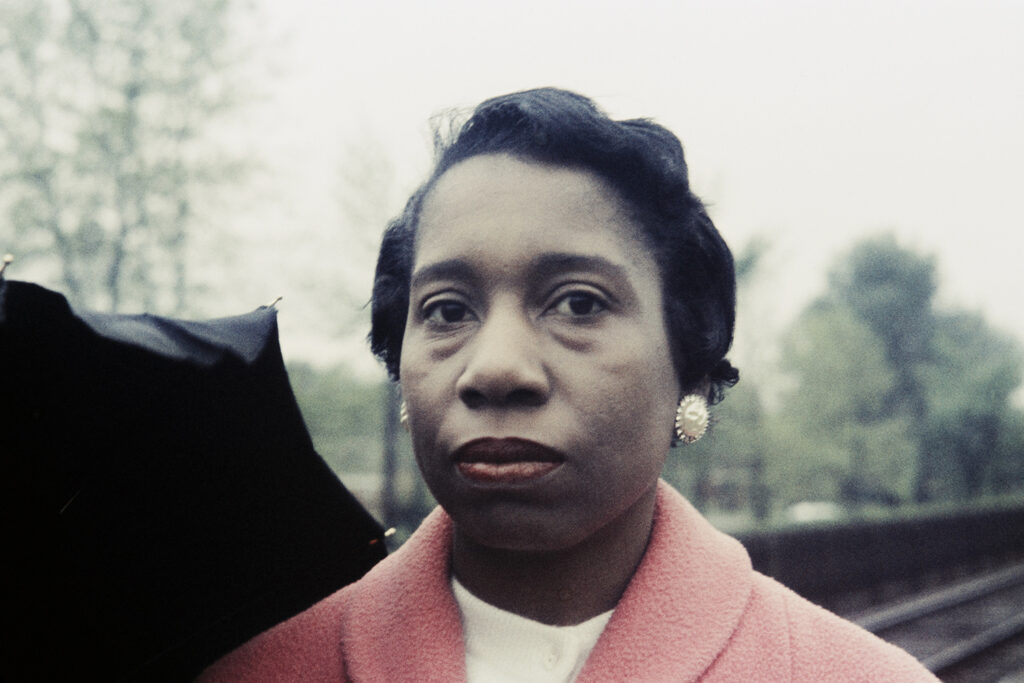
An example of this is a Woman in Pink Coat, the title calling out the color. While the color is beautiful and adds something, I can see this image just as strong in black and white as it is in color. The woman’s features and expression already make it beautiful and captivating, while the added color just adds a higher note that makes the image sing a little louder.
This image hangs with seven other portraits; again, these portraits could be interesting in either color or black and white. The red of the woman’s hair in Portrait of a woman in a fur coat, Likely Chicago, May 1967 like the pink in the coat photograph just add an extra layer of interest to an already wonderful image. Woman in ruffled blouse, Location unknown, August 1960, is an image all about texture and light. Like so many images in this exhibition, the color almost doesn’t matter. Yet in this photograph, the color white takes it to another level, or perhaps another place. The woman is almost radiant with an otherworldly feel. The woman appears angelic surrounded by white lace as it glows around her face. This selection of eight portraits contains much tighter photographs than I am used to seeing of hers. She must have had some communication with her subjects as she feels very close to them. I don’t see her as a stalker in camouflage using a telephoto lens to have made these images. I have always felt with her work that she was just a fly on the wall, and I never truly felt a sense of her communicating with her subjects until these. I love going to exhibitions of someone’s work you think you know all about, and then you can still feel surprised. These images were that surprise for me.
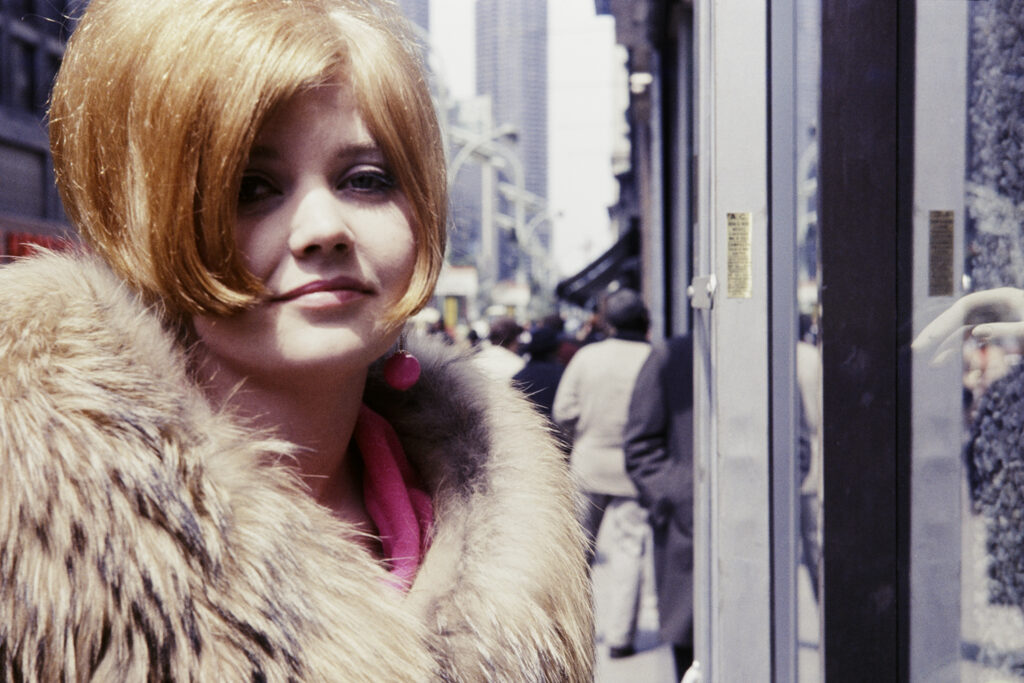
Her street-crossing images and those on the buses and through windows are always enjoyable. Her images on the bus and on the street feel much more familiar to me. The color does add a particular feel of time and place somehow, especially for those who grew up in Chicago at the times these were made.
Also familiar to those who have seen her work before are her self-portraits, Maier playing with her reflections over and over again; she was certainly ahead of the game with these, and in truth, she was with color as well. One can’t help but wonder, had she and her work been known at the time she created it, would she have been recognized as a master of color back then like William Eggleston? Would she have been known as a visionary as an artist like Lee Friedlander, who was playing with self-portraits in some of the same ways? Then again, she was a woman in a male-dominated field so she might have remained just as unknown.
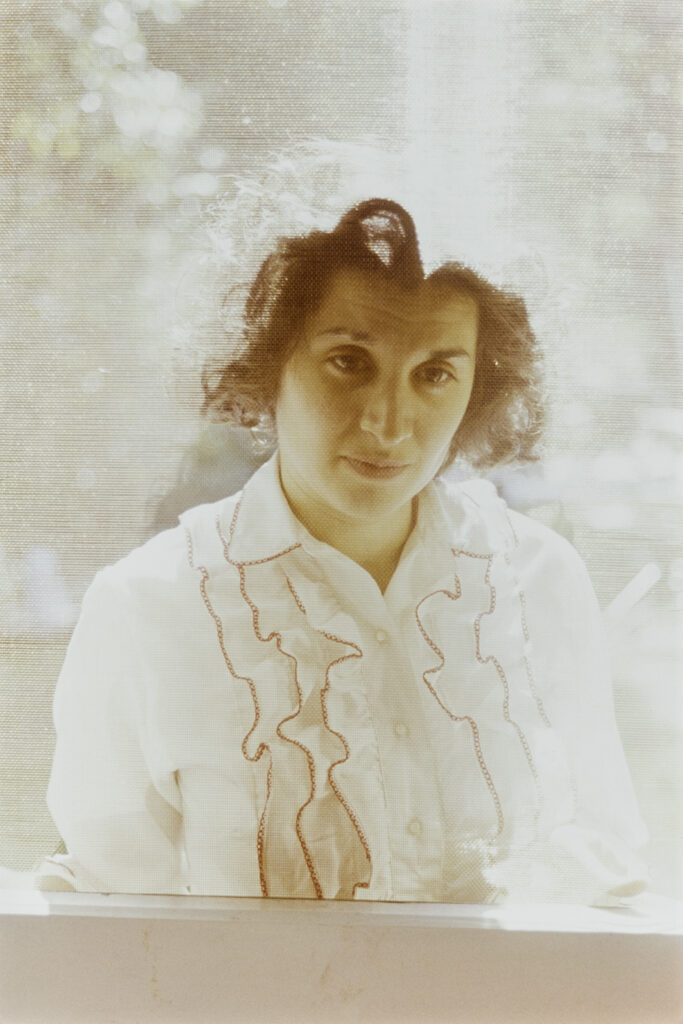
I love the image of Women on State Street in the Loop Chicago, (April 1967). The two African American women on either side of the image, like columns holding the photograph together. Your eye moving into the image and the white businessmen and the American flag across the street. For this viewer, the image represents the country. The black folks hold it together as the pillars who built America, yet your focus often goes to the wrong place, like those businessmen on the other side of the street.
The videos are kind of fun; you can feel her walking through the space and getting an idea of what she is after. These are not earth-shattering high art, more of a clip into her life and vision.
We will never know the complete details, and we can only grasp and speculate. The interest in her life and work will continue, with more exhibitions, books, and films.
Would she have wanted the fame she certainly didn’t seek?
I can see her sitting on the bench, sort of watching her movies in silence, but really she is watching the viewers. Her camera in hand, waiting for the moment that only she can see and click. Then she gets up and walks away and disappears into obscurity, leaving a roll of film behind her.
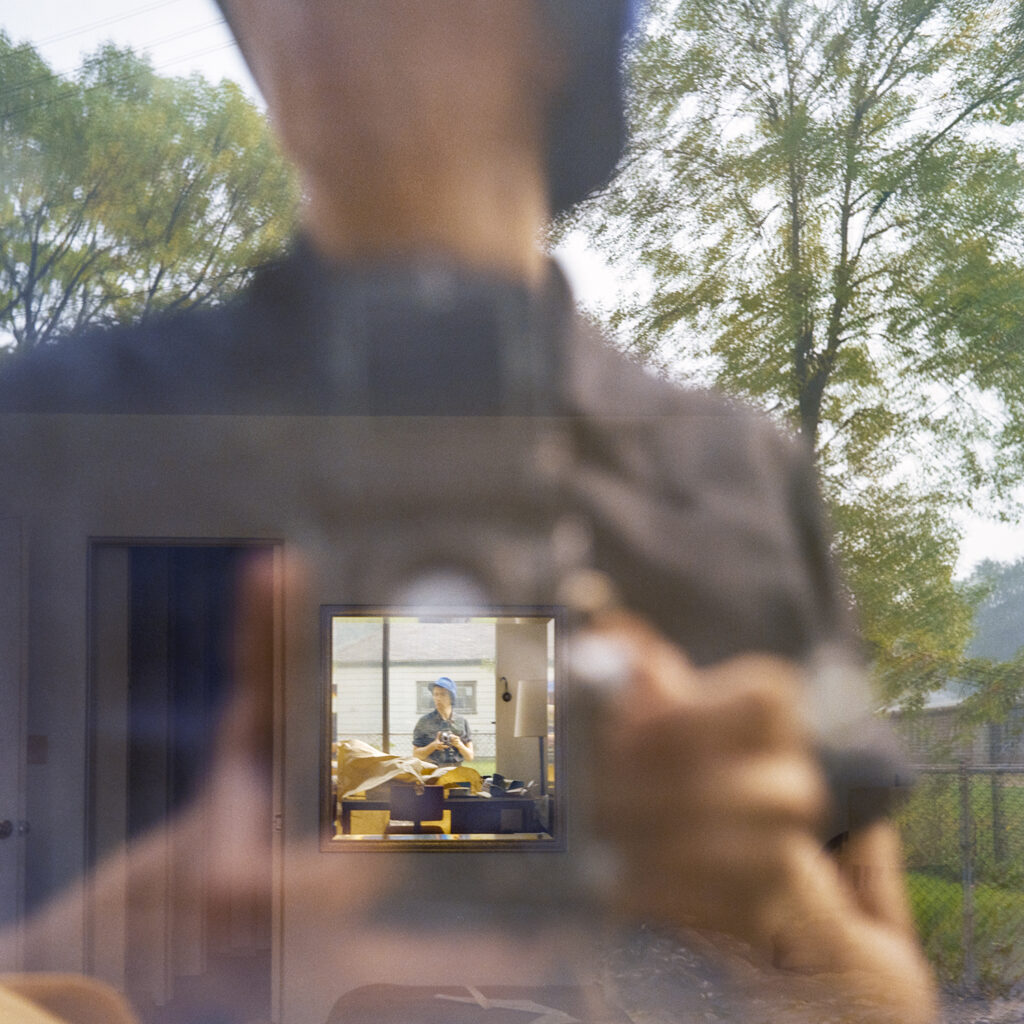
Vivian Maier: In Color is on display at the Chicago History Museum through January 2, 2023.
Top image: A view of the exhibition Vivian Maier: In Color at the Chicago History Museum. Various photographs and exhibition text are on the gray exhibition walls. Photo by Sarah Hoskins.
Additional information on Vivian Maier can be found via the links below:
www.kickstarter.com/blog/the-photos-of-vivian-maier
www.kickstarter.com/projects/800508197/finding-vivian-maier-a-feature-length-documentary
UnderMain: On the Road sends writers out of Kentucky to explore the visual arts in cities of the Midwest and near South. This program is generously supported by the Great Meadows Foundation.




